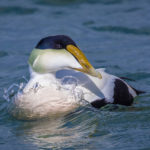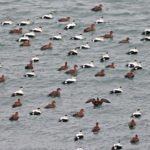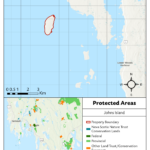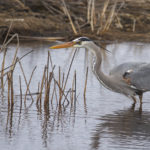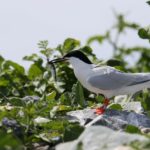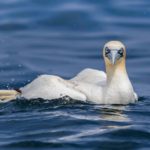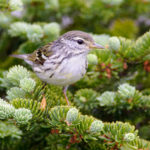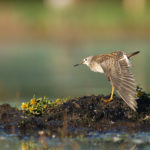Johns Island: Newly Protected Habitat for Migratory Birds!
09 May 2025
Just in time for World Migratory Bird Day, we’re proud to give migratory birds 168 acres of island habitat where they can celebrate – not just tomorrow but far into the future.
Birds are a critically important part of nature. They pollinate plants, disperse seeds, cycle nutrients, and control insects and other pests. But they are suffering devastating losses in every part of the world. Wild bird populations in Canada and the continental U.S. have declined by almost 30% since 1970. It’s a shocking number, but there is hope: though the populations are suffering, there are still enough of many species to spur a recovery, if conservation measures like habitat preservation are implemented now.
Protecting the entirety of Johns Island is a perfect example of the kind of conservation success that makes a real and immediate difference to Nova Scotia’s beloved birds.
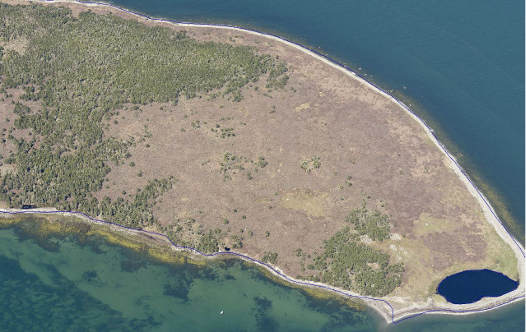
The northern portion of Johns Island, looking westward.
Johns Island, also known locally as St. Johns Island, sits a kilometer and a half offshore, just west of Central Woods Harbour. It is a critical stopover along what is known as the “Atlantic Flyway,” one of four main North American “bird superhighways”; like other islands and coastal habitats along this route, Johns Island gives birds food and safe places to rest along their arduous migration journeys.
The island is also a nesting site for several bird species at risk. In fact, the Common Eider colony found there is believed to be the largest in Nova Scotia. For a species with a sharply declining population even among birds already at risk, the protection of this site is significant on this point alone.
But Johns Island is also a rich and beloved site for many other bird species, including species at risk. It is an extremely important foraging site for Roseate Terns, which are listed both provincially and federally as endangered. Great Blue Heron are believed to nest on the island, with confirmed sightings of juveniles recorded recently on its shores. It provides refuge for boreal species such as Fox Sparrow and Blackpoll Warblers, whose presence outside their typical migration patterns suggests that the island serves as both a climate refuge and potential stopover point for migratory routes.
Other species of conservation concern recorded on the island include Northern Gannet, Eastern Wood-Pewee and Lesser Yellowlegs. Other noteworthy birds recorded on the island include Semipalmated Plover, Least Sandpipers, Nelson’s Sparrow, American Kestrel, Eastern Wood-Pewee, Ruddy Turnstone, Short-billed Dowitcher, and Black-bellied Plover.
The island’s flourishing biodiversity underscores its importance as a key conservation site. The 2021 Coastal Islands Prioritization report also ranked this island as high priority for its sea level rise resiliency, habitat richness, and intertidal communities. It is an ecology that is highly underrepresented in the Nova Scotia protected areas network, making the Nature Trust’s successful protection especially important.
“Many people ‘flocked’ to birding during the pandemic, and we’ve seen that strong community interest in birds continue since then,” says Bonnie Sutherland, the Nature Trust’s Executive Director. “Nova Scotians recognize that the birds here are special, and if we want them to continue to be here in the future we have to make sure they have safe places to rest and nest.”
While the protection of Johns Island is a victory worth celebrating, birds in Nova Scotia and worldwide are still at tremendous risk. Habitat loss is one of the main driving factors in their decline, making the Nature Trust’s conservation work critical to their survival. We invite you to consider making a tax-receipted charitable donation to help save more places like Johns Island where nature can thrive.
The protection of Johns Island was undertaken with the financial support of the Government of Canada through the federal Department of Environment and Climate Change. The Nova Scotia Nature Agreement is a project of the Province of Nova Scotia. Working with conservation partners, the goal is to increase the amount of protected and conserved areas and advance an integrated approach to the protection, conservation and recovery of biodiversity, including habitat, species at risk and migratory birds, in the Province. The Nova Scotia Nature Agreement is funded by Environment and Climate Change Canada, through the Canada Nature Fund.
Additional funding support came from Nova Scotia Crown Share Land Legacy Trust, a critical source of land securement funding for Nova Scotia’s land trusts.


